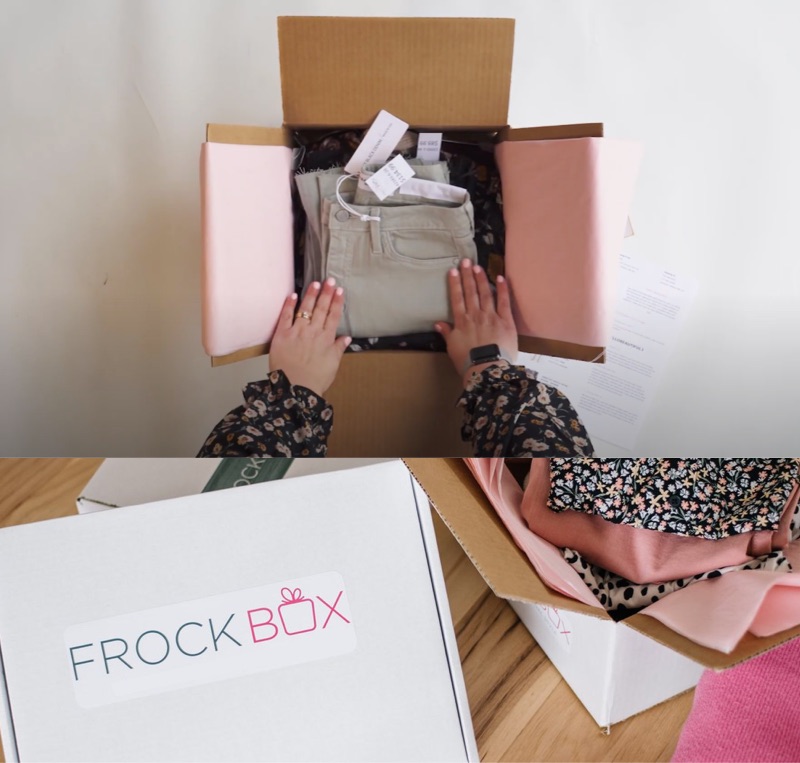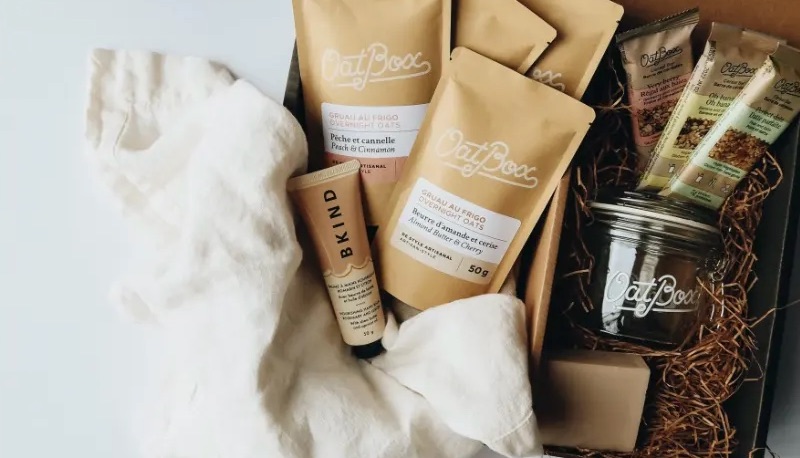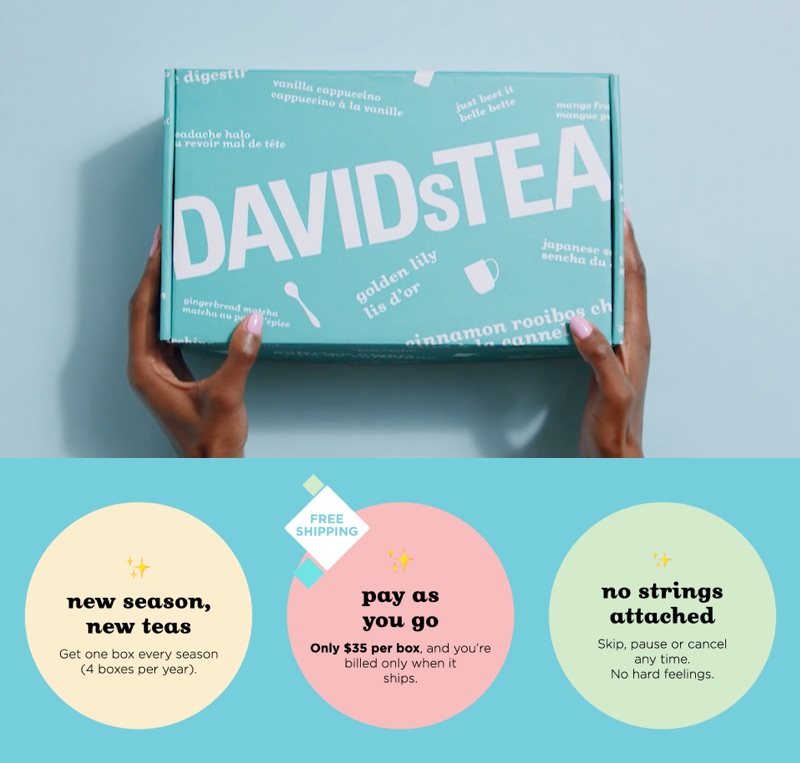Subscription boxes are a great way to keep customers engaged with your brand or business. By offering a recurring, physical delivery of curated specialty products to your customers, you can take their online shopping experience to the next level, raise awareness for your business and products and increase sales. To help you determine if the subscription box model is right for your business, let’s explore their benefits, things you should consider before launching a subscription box and tips for creating one – or joining an existing collective box.
- Key benefits of subscription boxes
- Key considerations before launching a subscription box
- Tips for creating or joining a subscription box
Key benefits of subscription boxes
Subscription boxes can help your business offer a unique experience for customers. They can work for many products – from fashion and beauty to food and pet necessities – and can have many benefits for customers and retailers alike. Here are some of their key benefits:
They are a fresh take on e-commerce that’s growing in popularity
With the introduction of its beauty box in September 2010, New York-based Birchbox became a pioneer in the subscription box market. Since then, subscription boxes have continued to increase in popularity.
Subscription boxes have made their mark on Canadian e-commerce trends. At Canada Post, we keep a close eye on those trends through our own industry-leading research. Over half of Canadians shared with us that they have either subscribed to a subscription box for themselves or gifted a subscription box.1 22 per cent of companies have experienced increased subscription acquisition rates since the onset of the pandemic. It’s a great time to explore offering a subscription box, giving them a shopping experience that breaks away from the norm and routine of search, scroll and click.
In a traditional e-commerce store, all products are on display for customers to choose from. With a subscription box, subscribers receive curated items they’re likely to enjoy based on their personal preferences. Their preferences can be captured at sign up through a series of questions or even a simple checklist. Each customer’s preferences will influence what they receive, so they have a general idea of what they’re getting, but ultimately end up with a surprise selection of products that they’re likely to enjoy and find value in.

A woman unboxes a subscription box from Frock Box. It contains spring fashion items selected for the recipient by a stylist.
Frock Box’s monthly subscription boxes are great examples of boxes tailored to the wants and needs of subscribers. They have three box offerings for customers to choose from: the Shoe Box, Favourites Box and Gold Box. Through their tiered subscription levels, they offer customers varying perks and flexibility, allowing them to customize their subscription experience. Frock Box’s mid-tier subscription, the Shoe Box, includes one pair of shoes per month. There is built-in flexibility as subscribers get a sneak peek at the shoe of the month and the option to opt in or out of the month’s box – so that they don’t fill their closet with unwanted footwear. At the lowest price point, the Favourites Box includes 5 pieces of clothing, handpicked by a stylist. Their experience is comparable to shopping in store or with a stylist as they’re able to try on the clothes and send back any items that don’t work via prepaid returns through the mail. They only pay for the pieces they keep and save 25 per cent if they choose to keep all five items. The Gold Box, their highest tier, offers the ultimate tailored shopping experience from Frock Box. Each month, subscribers receive an outfit professionally styled for them according to their taste, heightening the personalization of their subscription. All three boxes deliver a delightful blend of physical and digital shopping experiences.
Learn why unified commerce is expected today – and how it will shape your retail future.
Read our blogThey enable personalisation and help customers make choices
Most subscription boxes are heavily curated based on the interests and preferences of customers. They offer retailers a perfect opportunity to get to know the likes and dislikes of their customers – without acquiring that intel in an intrusive way. Retailers typically gather consumer preference data during sign up and may reach out to refine it as their offering evolves. Smart retailers will mine this rich customer data and use it to enhance and personalize their boxes.
Even when customers are able to customize elements of their subscription box, the retailer chooses what products they receive at the end of the day. In some cases, choosing what to buy from a retailer can be overwhelming for customers – especially if the business offers many products. A subscription box can eliminate the need for the customer to make tough choices, while enabling them to experience the brand.

An unboxed Oat Box subscription box full of packages of oatmeal, granola bars, a glass jar of honey and a squeeze bottle of BKIND hand balm.
They encourage customers to try more products and are exciting to receive
A subscription box is a great way to introduce your customers to more of your products. Each box can offer new-to-them products that they might like, or premier brand-new products. Take the Flavour of the Month box from OatBox, for example. Every month, OatBox’s chef develops new flavors called “Monthly discoveries” which are inspired by the season. They are only available during that month. Subscribers are introduced to these new products in every box. Each month, Flavour of the Month subscribers receive two packages of OatBox’s granola of the month, 1 package of OatBox’s oatmeal of the month and 3 breakfast bars.
Adventurous shoppers like that subscription boxes can ship a little surprise in every box. Customers usually have a vague idea of what’s coming, but the specifics are often unknown until arrival – making the experience exciting. Take Luxe Box, for example. Subscribers receive a personalized beauty box including 7 to 8 trial-sized beauty and lifestyle products chosen just for them by Luxe Box’s Beauty Editors. Subscribers are encouraged to share their thoughts and experiences with Luxe Box, helping their team curate future boxes with even greater precision.
They build loyalty and revenue
Subscription boxes recur by nature. The model ensures that customers place a regular order from you at a fixed price. This will likely increase their spend with your business over time because rather than having to entice them back time and again to shop in your online store, the customer will order from you steadily throughout the year as part of their subscription. Predictability is never a bad thing when it comes to sales.
Key considerations before launching a subscription box
Before you jump into the subscription box market, it’s important to properly prepare your business. The logistics of subscription boxes can be tricky to master. Keep these considerations in mind before launching a program of your own.
Pricing
Subscription box customers expect to be charged the same price for every box. Sounds simple at first, but what if your products vary wildly in price? Will it be possible for you to assemble boxes of comparable value? When it’s time to price your box, you need to factor in costs like product costs, shipping, fulfillment and customer acquisition. It’s critical that you establish a reasonable price for the box that factors in those costs and a good profit margin – so you don’t wind up losing money.
Fulfillment
It’s important to ensure your fulfillment strategy is well organized when you set out to launch a subscription box. You need to ensure that you have the capacity to fulfill your orders efficiently. If you can’t handle it in-house, you might need to outsource it.
Learn how to master fulfillment with our guide.
Growth
Overnight success sounds wonderful at first, but it can be a logistical nightmare for a retailer. If your subscription box takes off, and you suddenly find yourself flooded with orders, you need to be able to fulfill them. If you’re not able to, you need to determine what your maximum number of orders is and ensure that you don’t sell beyond that number.
Learn how Sussex Beard Oil Merchants strategically handled their viral success.
Shipping
Shipping for subscription boxes can be tricky. How tricky depends on what you’re shipping and to where. Both factor heavily into the cost of your shipments.
What you ship is totally up to you. What do you want to ship? How heavy is it? Will the weight vary much from box to box? Shipment weight and size directly impacts your cost to ship.
It’s important to keep your box size and overall packaging consistent from month to month to stabilize your costs and ensure brand consistency. If you have a good sense of the box size you will use, and how much your shipments will weigh, you can estimate shipping cost to certain geographic areas and build that cost into the price of your box.
Not sure what packaging is right for your business? Get our guide.
You can tackle the where by narrowing down the areas you are willing to ship to. For example, you could choose to only ship within your town or city; to certain towns, cities, regions and/or provinces; and to certain countries or nations. Making choices like this will help you manage your shipping costs and make them more predictable. You could opt to charge the customer the cost of shipping – but that’s usually ill-advised as most customers expect free or low-cost shipping for their orders.
A good e-commerce shipping partner can help you make informed shipping decisions for your subscription box. Look to partner with a company who can help you calculate and predict costs, choose the right packaging for your box and potentially offer you a flat rate on your shipments.
Learn how Canada Post helped Oatbox expand its reach by affordably shipping its subscription boxes to the U.S.
Tips for creating or joining a subscription box
Before you jump in, it’s critical to evaluate if your products will fit – literally and figuratively – into the world of subscription boxes. According to our research, the top categories for subscription boxes include books, meal kits, arts and crafts and hobbies.2 Alcoholic beverages (wine, sprits, beer) and health and wellness boxes are also growing in popularity.3 If these categories don’t apply to your business, do some research to see if boxes exist for comparable products to assess if this opportunity is right for you.
Think outside the (subscription) box

A banner on the DAVIDs TEA website promotes their new subscription box which features seasonal teas, pay-as-you-go pricing and the ability to pause or cancel at any time.
There are many subscription boxes out there and it never hurts to be different. David’s Tea has proven to retailers that you can think outside the box. The company recently launched a tea lovers’ seasonal tasting subscription box through their Tea Tasting Club. It’s a quarterly subscription featuring up to 8 seasonal and exclusive teas. The subscription goes beyond the box by offering members exclusive access to an online hub (members only) that’s filled with tips and tricks to get the best brew, curated content and a forum where they can interact with other tea lovers. What could you offer your customers that goes beyond the box?
Find your niche
You want your box to be unique so it will stand out in the crowd. To achieve this, it’s a good idea to target it to a niche audience. Not sure what your niche is? Think hard about your best-selling products and the demographics of your customer base. Are there any common themes? Dig into any customer data that you have to determine common threads in who shops from you and for what.
Learn how Olivia Canlas of Meowbox found her subscription box niche.
Go it alone, or build a partnership
View this post on Instagram
An Instagram post from @SweetReadsBox features an unboxed Winter Wellness Box from Sweet Reads Box.
Subscription boxes aren’t suitable for every retailer, and a subscription box exclusively for your brand may not be in the cards. If you want to dip your toe in the water, explore partnering with a curated subscription box service. Once you determine what your niche is, research collective boxes that relate and try to pinpoint ones your products could enhance. A box that includes your products could appeal to your current customers while also helping you extend your reach to the service’s overall subscription list.
Collective boxes, like The Jilly Box and Sweet Reads Box, are tailored to niche clientele. They stick to a theme when incorporating products from various businesses. Each Sweet Reads Box, for example, targets bookworms with a bestselling novel and items that enhance it. In each box, subscribers receive a book, something to drink and snack on while they read it, as well as an item that’s related to the novel in some way – all explained on an enclosed card.
Be flexible
Shoppers want flexibility regarding when and how they receive their subscription boxes and what goes into them. It’s important to keep them happy to build loyalty. Consider offering them:
- The ability to pause memberships, or skip an edition of the box
- A delivery experience that keeps them informed from end to end
- Customization options for memberships (annual vs. per box) and the box contents (such as offering a choice of a set list of items per box, sizing or dietary preferences/allergies if applicable to your offering)
- Upfront information about costs, inclusive of any additional shipping and handling costs for their box
At the end of the day, a subscription box done right will be a benefit to your business – if it’s right for your business.
Sources:
1 Canada Post. 2020 Fall Survey, 20-2014, October 2020.
2 Ibid.
3 Ibid.
We’re here to help!
Ready to explore how subscription boxes fit into your business? Get help from an e-commerce expert.
Contact an expert